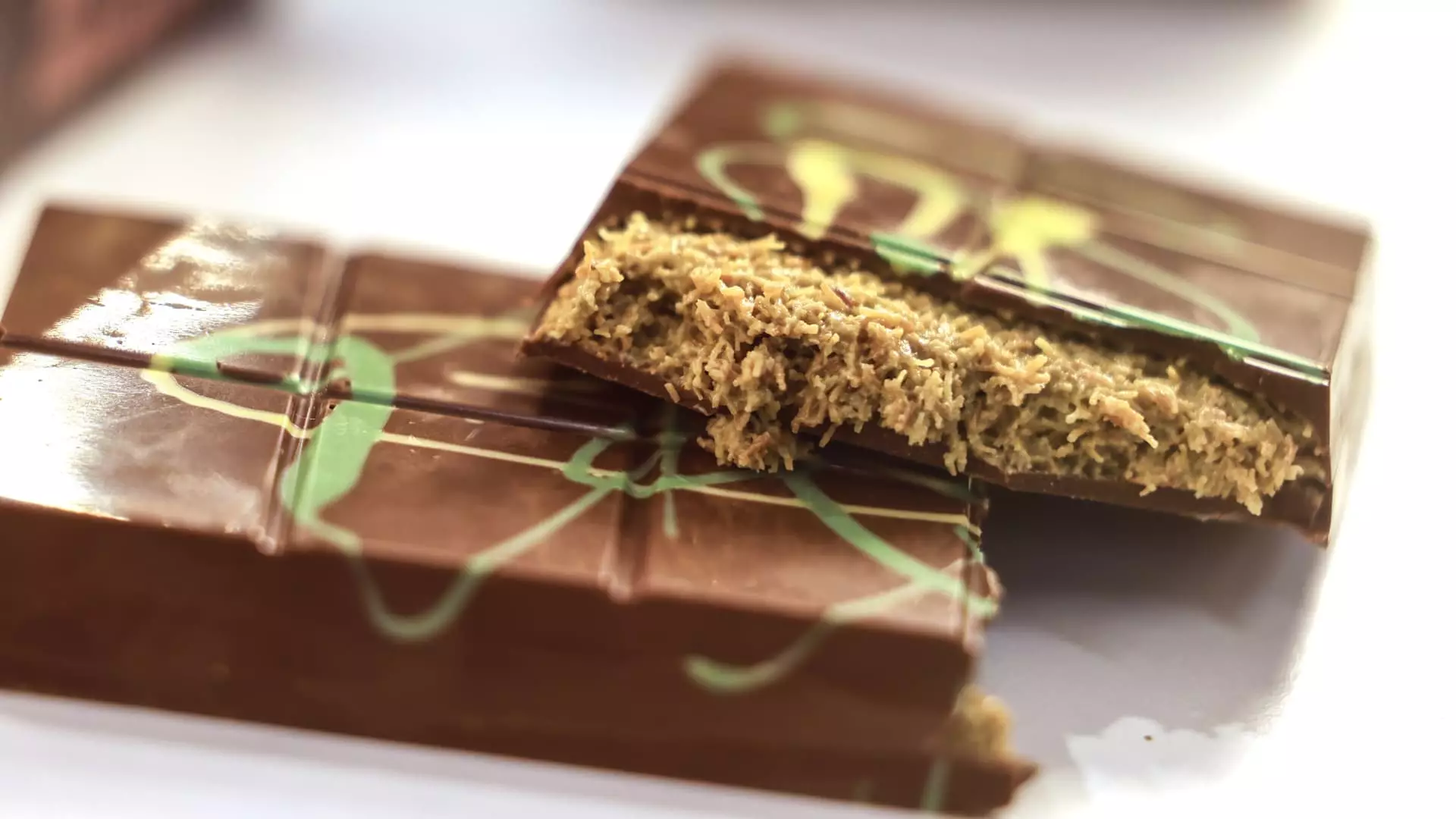In a world captivated by gastronomic trends, few phenomena have risen to prominence with the same fervor as the emergence of “Dubai chocolate.” What began as a whimsical craving during Sarah Hamouda’s pregnancy has exploded into a global sensation, enticing palates and sparking a commercial frenzy. The concept of a chocolate bar that doubles as a decadent dessert—bursting with pistachio cream, kadayif, and tahini—is innovative and irresistible. Hamouda’s artistic vision not only captured the essence of indulgence but also showcased the cross-cultural fascination with dessert. It’s a powerful reminder of how a personal craving can resonate beyond the individual, launching an entire trend.
The rapid evolution from a singular chocolate bar in Dubai to a worldwide obsession is a testament to how tastes can shift with lightning speed, propelled by social media platforms. What was once a niche product became a viral sensation practically overnight. The excitement surrounding this chocolate transcends mere flavor; it speaks to an era where culinary creations can go viral, capturing collective imaginations and appetites.
Competition Breeds Innovation
As the demand for Dubai chocolate skyrocketed, U.S. companies like Shake Shack and Crumbl wasted no time in riding the wave of excitement. The introduction of limited-edition spinoffs and inspirations suggests a savvy understanding of market dynamics. Yet, this rapid expansion also raises questions about authenticity. Are these adaptations mere commercial opportunism, or do they signify a genuine appreciation for the artistry of the original?
The culinary world is no stranger to duplicating trends, and the flood of dupes at retailers like Target and Trader Joe’s illustrates a capitalist response to demand. While it’s thrilling to see diverse interpretations of a beloved concept, it risks overshadowing the original creators. The line between homage and appropriation becomes increasingly murky in the face of consumerism. Are we losing the depth of storytelling that comes with understanding the origins of these culinary delights? In a market driven by trends, the complexities of genuine innovation often get lost in the rush for profit.
The Trademark Dilemma: Protecting the Original
The situation is further complicated by Dubai’s lack of participation in international trademark treaties, leaving the original product vulnerable to imitation. This absence of protection raises critical questions regarding intellectual property and the ethics of culinary reproduction. As behemoths like Lindt begin to churn out their versions, one must ponder whether this is a sustainable model for innovation or a slippery slope into a world where originality is commodified into insignificance.
The case of Dubai chocolate serves as an illuminating example of how globalization often dilutes the essence of originality. When the cultural significance of a product is tangled with commercial interests, the result can be a mere shadow of the original’s artistry, stripped of its rich narratives and local significance. If quality and authenticity are sacrificed on the altar of mass production, consumers may find themselves grappling with an empty experience despite surface-level satisfaction.
A Growing Trend: A Double-Edged Sword
The growing chocolate trend signifies both opportunity and encroachment. As companies like Nuts Factory step in to fill the gaps with their imitations, we must applaud the creativity while also lamenting the dilution of cultural roots. These imitative efforts, while initially flattering to the original creators, may lead to consumer confusion about the authentic experience.
Interestingly, the trend shows no signs of abating, as evidenced by the increased presence of chocolate-pistachio combinations on menus nationwide. Whether this suggests an appreciation of culinary diversity or merely a hunger for the next trendy flavor is up for debate. What is clear, however, is that the cultural dialogue surrounding food continues to evolve, challenging our perceptions of authenticity and creativity.
As we savor these new desserts and adaptations, it’s essential to remain critically aware of the complex interplay between culture, commerce, and creativity. The allure of Dubai chocolate is not just in its flavors but in the stories and innovations that breathe life into every bite. In a world hungry for novelty, the challenge lies in ensuring that the original inspirations are honored, even as adaptation takes center stage. The future of our culinary landscape will depend on how well we navigate these dual narratives—celebrating innovation while safeguarding authenticity.

Leave a Reply